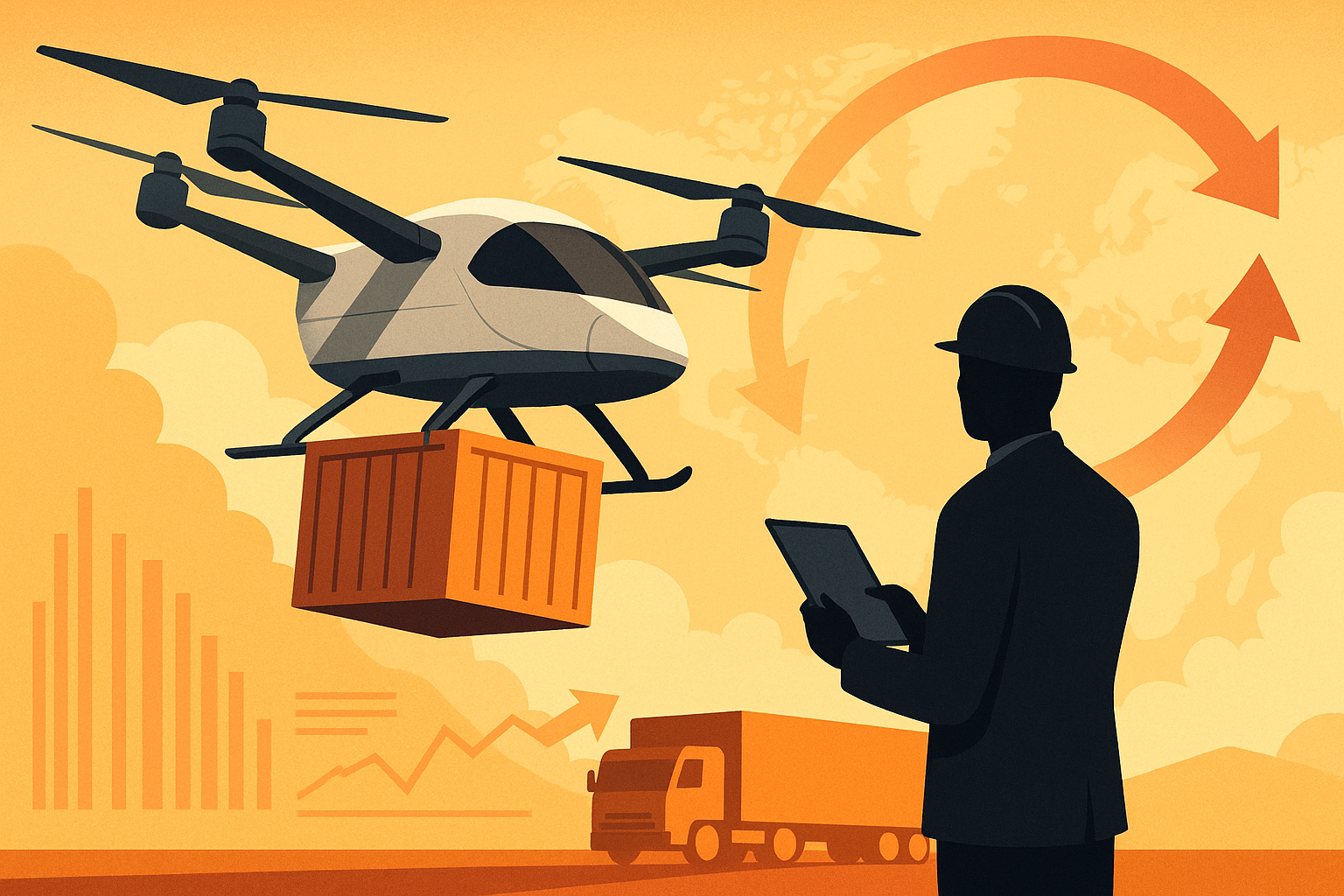As supply chain resilience and last-mile delivery innovation dominate investor conversations, U.S. aerospace innovator AIRO is positioning itself at the center of the next logistics evolution. On July 22, 2025, the company unveiled its latest middle‑mile cargo drone technology and simultaneously announced the launch of cross-border operations in Quebec’s YMX International Aerocity Innovation Zone—a move signaling North America’s growing appetite for drone-powered logistics.
The development underscores a broader momentum in emerging drone technologies, especially as governments, logistics firms, and airspace regulators begin embracing commercial unmanned aerial systems (UAS) for regional cargo routes. For forward-looking investors, AIRO’s expansion is more than a product launch—it’s a glimpse into a scalable industry shift.
Why This Announcement Signals a Logistics Turning Point
Middle-mile delivery—typically referring to transportation from warehouses to distribution hubs—has long been seen as a bottleneck in e-commerce and supply chain infrastructure. Traditional transport methods are often costly, time-sensitive, and increasingly strained by labor shortages and environmental regulations.
AIRO’s solution? A fully autonomous, electric vertical takeoff and landing (eVTOL) cargo drone with a payload capacity of up to 500 pounds and a range of 300 miles, according to company data released via FinancialContent. Designed for B2B regional transport, the drone will initially serve cross-border pilot routes between Ontario and Quebec, with plans to expand operations to U.S. Northeast logistics corridors by Q1 2026.
AIRO’s participation in EAA AirVenture Oshkosh 2025—a major aerospace industry event—also helped validate the drone’s operational readiness and technical appeal. According to sources at the event, the company has secured early-stage interest from three Canadian logistics firms and is currently negotiating test programs with a U.S. pharmaceutical distributor.
Why This Matters for Investors
Drone logistics is no longer science fiction. The global commercial drone market is projected to exceed $58 billion by 2030, growing at a CAGR of 16.5%, according to Allied Market Research. In the U.S. and Canada, regulatory frameworks are beginning to catch up: both Transport Canada and the FAA are working toward wider drone airspace integration, including corridor mapping and BVLOS (Beyond Visual Line of Sight) certification pathways.
With its expansion into Quebec’s YMX Innovation Zone, AIRO gains access to a hub designed specifically for aviation and aerospace testing. The zone offers access to controlled airspace, 24/7 customs, and R&D funding support from provincial and federal programs—making it a high-leverage launchpad for commercial scaling.
Investors should also note the company’s dual-market presence in both the U.S. and Canada, which allows for greater regulatory diversification and cross-border funding access—two strategic advantages rarely available to earlier-stage drone manufacturers.
Future Trends to Watch
1. Middle-Mile Drone Adoption
With last-mile delivery saturated by smaller drones and ground robots, middle-mile cargo presents a new frontier. AIRO and competitors like Zipline, Wingcopter, and Elroy Air are increasingly focused on this segment.
2. Public-Private Infrastructure Collaboration
Initiatives like Quebec’s YMX Zone and the U.S. FAA’s BEYOND program are paving the way for infrastructure that supports scalable drone corridors. Investors should monitor logistics hubs investing in drone-compatible facilities.
3. Autonomous Logistics Stack
AIRO’s drone operates using a modular software system that integrates with smart warehouse platforms and real-time routing algorithms—making it a play not just in hardware but in AI‑driven logistics software.
4. Green Transport Incentives
As climate targets tighten, electric drones could become eligible for green infrastructure subsidies and ESG-focused investment vehicles. AIRO’s emissions-free design positions it favorably in this regulatory shift.
Key Investment Insight
AIRO’s announcement isn’t just a hardware showcase—it’s a strategic positioning move in a sector that’s gaining both political and financial tailwinds. Investors looking to tap into next-gen logistics may consider drone manufacturers, drone-software integrators, and regional infrastructure enablers as emerging plays.
While the regulatory path is still evolving, companies operating in innovation zones and cross-border pilot corridors are likely to hold a first-mover advantage. A balanced approach—considering both private equity exposure and publicly traded adjacent firms like Kratos Defense (NASDAQ: KTOS) or Volatus Aerospace (TSXV: VOL)—may provide diversified access to the trend.
The Sky Isn’t the Limit—It’s the Starting Line
As airspace opens to autonomous delivery at scale, staying ahead of where innovation meets infrastructure is crucial. MoneyNews.Today brings you the edge in emerging industries, helping you navigate disruptive sectors before they go mainstream. Stay tuned for the next signal.





